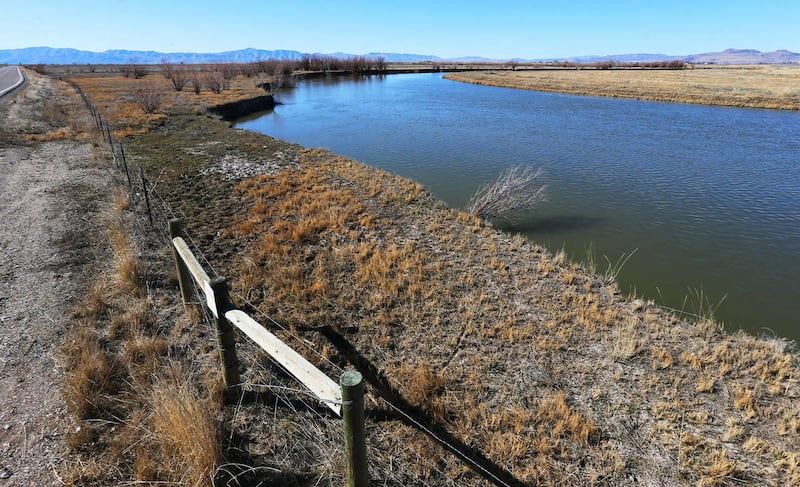SALT LAKE CITY — An updated study on how to get 220,000 acre-feet of water to the Wasatch Front in 2050 explores 13 potential ways to do that and what the cost would be.
The feasibility study — released Tuesday by the Utah Division of Water Resources — looks at 13 potential reservoir and pipeline alignments for the Bear River Development Project, estimating it would cost anywhere from $1.5 billion to $2.8 billion. It has drawn the ire of multiple groups, including the Utah Rivers Council and Friends of the Great Salt Lake, that are critical of the project because of its impacts on the watershed.
Initially, the project approved by the Utah Legislature in 1991 anticipated Box Elder, Weber, Davis and Salt Lake counties would need the water by 2015, but it has been delayed.
“Thanks primarily to conservation efforts, new technology and some smaller water development projects, current projections indicate the need for this project has been pushed out between 2045 to 2050,” said Eric Millis, director of the Utah Division of Water Resources.
Although the project would divert 220,000 acre-feet of water on an annual basis from the Bear River, the division said much of that water would be put back in the system through “return flows.” The actual depletion from the watershed is estimated to be 85,600 acre-feet. An acre-foot of water is 326,000 gallons, or enough water to cover an acre at a depth of one foot.
The Bear River Development Project, intended to meet the needs of a state population expected to nearly double by 2065, is not without its controversy.
The division points to modeling that shows the diversion would reduce Great Salt Lake levels by an average of 8.5 inches or as much as 14 inches. Those reductions were projected in an analysis by Utah State University, Salt Lake Community College and the Utah Division of Water Resources.
Recent measurements show the Great Salt Lake is already struggling. During the past 50 years, the lake logged its lowest recorded levels. Those two measurements came within the past three years — in 2016 and again in 2018.
The project is in a planning stage and will have to go through an extensive federal environmental analysis before it is approved. Next steps include additional studies that will look at climate variability and the Great Salt Lake.
Zach Frankel, executive director of the Utah Rivers Council, said the depletion claims from the Utah Division of Water Resources are “nonsense” and widely contested.
In addition, he pointed to a new study by the University of Utah’s Economic Evaluation Unit that shows the Bear River Development Project would require “massive” increases in water rates, impact fees, or property taxes for Wasatch Front residents who would get the water.
The study was commissioned by U.S. Magnesium, a mineral business near the Great Salt Lake concerned about falling lake levels.
The analysis looked at the debt each district would have to take on for the project and compared that debt obligation against current net revenue.
“If the project were financed by rate increases, these increases would be so significant they would likely result in major decreases, which calls into question the need for the Bear River development in the first place,” said Gabriel Lozada, one of the authors of the report.
Lynn de Freitas, executive director of the Friends of the Great Salt Lake, added she considers it irresponsible for the division to continue to pursue the project.
“It is frightening process when you think about where the Great Salt Lake seems to be going right now,” she said.
“I just feel like we are missing the boat. We need to be looking at substantive ways to address our quality of life, address the needs of the Great Salt Lake and address the needs for our regard for our water resources. There is a lot we could do. Our responsibility lies with the lake and to make sure we are doing everything to address the decline of its lake level.”
The feasibility study can be viewed on the division’s website.


